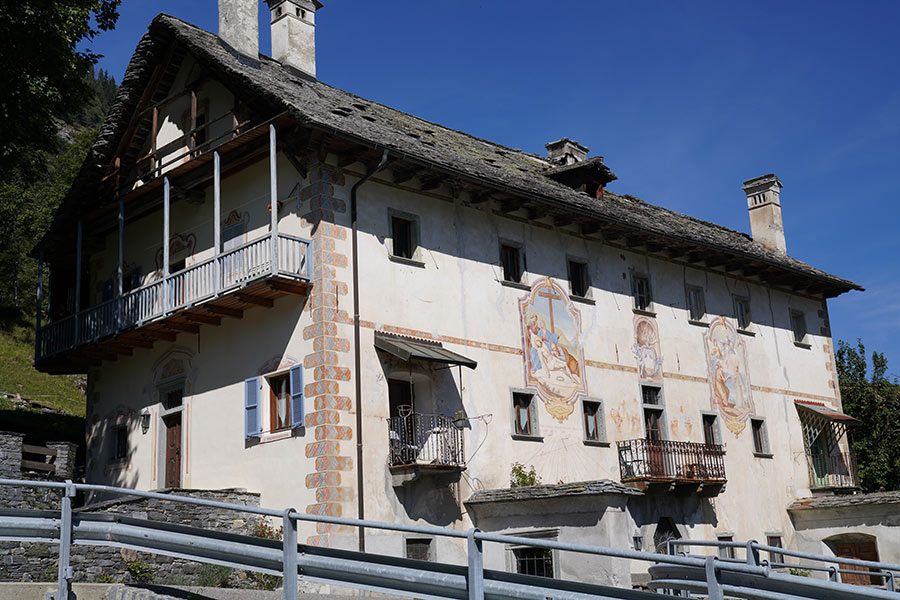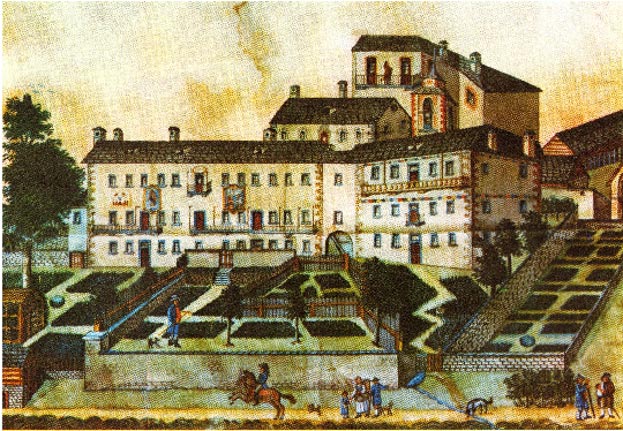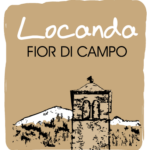
The rectangular building, next to the Oratory of the Vergine Addolorata, consists of three floors. On the façade there are two votive frescoes, represented by the Mourning of Christi's Death and the Eternal Father among the Saints, which were realised by the famous painter Giuseppe Mattia Borgnis of Craveggia.
In addition to the aforementioned frescoes, a sundial with the words "Fermati o passeggier e pensa al (?) ponto a cui si riducono le ore a render conto a Dio" and the Pedrazzini family coat of arms can be seen on the same façade.
There is another impressive building above the stream with a slightly sloping façade on which two frescoes are depicted. The Oratory of San Giovanni Battista is part of this building.

In the 18th century, this house appeared as in the watercolour drawing above: "Pedrazzini houses towards noon" realised by Stefano Lamberti in 1825.
The central frescoes depict the Virgin Mary, San Michele and Sant'Antonio and, on the left, the eternal, immaculate Father. There are still several soapstone stoves in the building to heat the rooms. As you can see from the picture, the gardens were very stately.
Behind the main building there were two more houses, which were unfortunately demolished.
Today, the houses belong to different families of Campo and are mostly visited only during the holiday season. Some parts of the structures have been renovated, while others have not.
The Pedrazzini Houses
The Pedrazzini houses were built by the Pedrazzini family in the 18th century in 1730 and 1782.
The structures were built by Gaspare Pedrazzini (1640-1724) and his children Giovanni Battista (1673-1749) and Guglielmo (1675-1744), who made their money in 17th and 18th century Germany, Kassel.
The family founded a trading company in Germany and pursued several commercial activities in other cities in the country.
Gaspare Pedrazzini returned to Campo every five years. The general rule was that one male member of the family ran the business in Campo for a certain period of time and was then replaced by another. In this way, everyone could spend time with the family in Campo in a rotating system.
